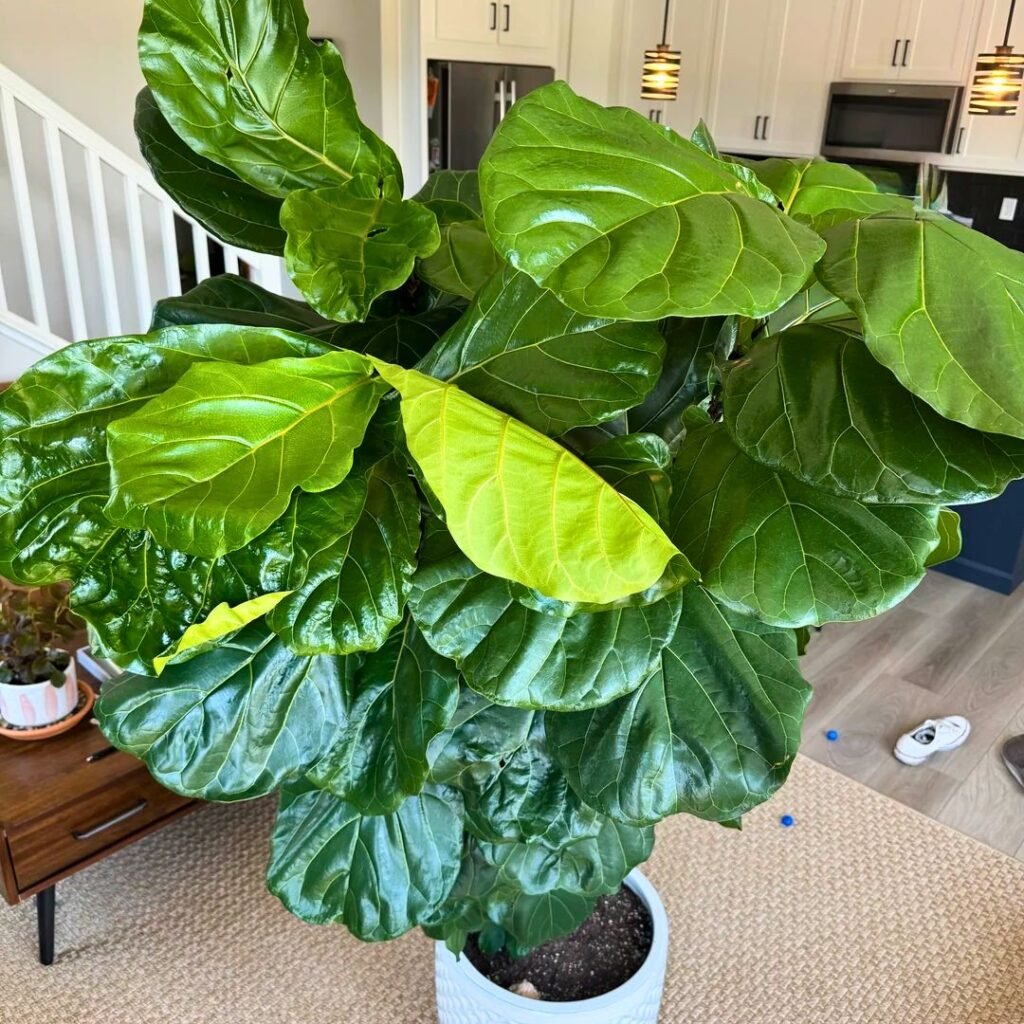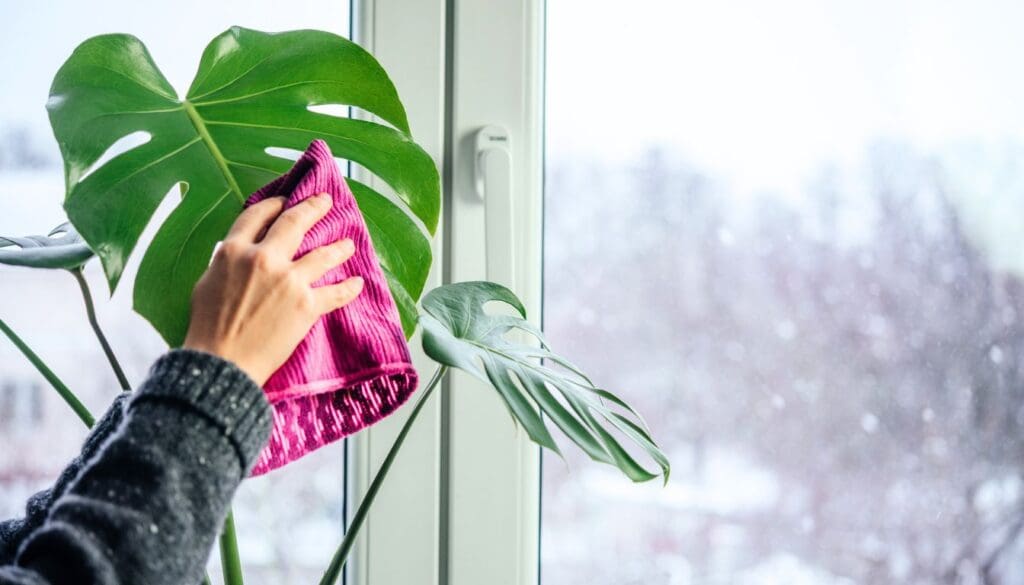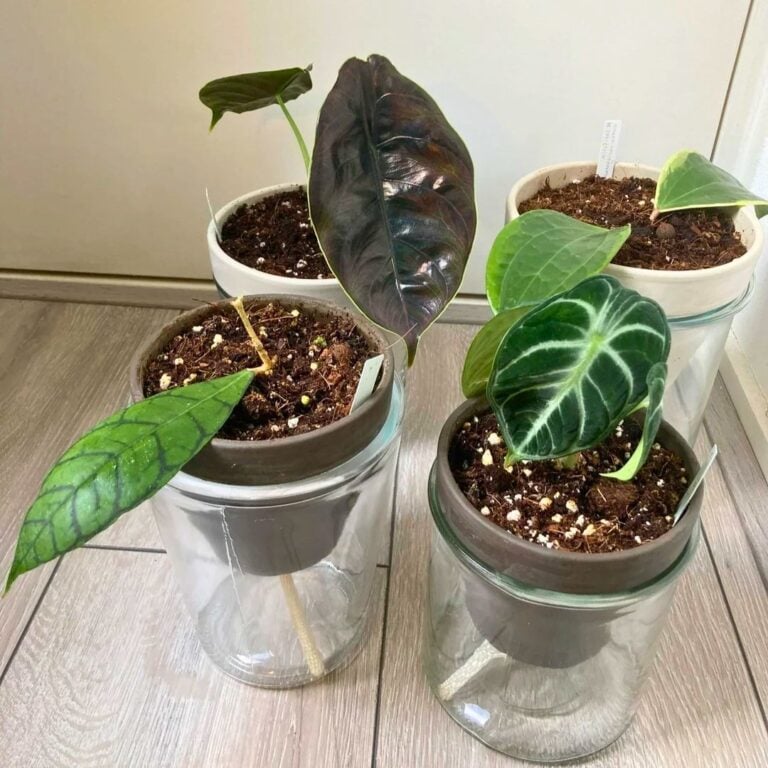5 Natural Ways to Clean Leaves During Fall Dust Season
Fall brings a burst of color and, honestly, a whole lot of dust.
My yard can start looking pretty messy fast, so I’m always searching for simple, chemical-free ways to tidy up.
I want to share natural options that help me clean up my leaves and keep my outdoor space healthy.
These methods are easy, eco-friendly, and somehow make fall cleanup feel a bit less like a chore.
Please note: Simplify Plants is reader-supported. As an Amazon Associate, I earn from qualifying purchases made by our readers with no extra cost added to you all! Some links in the post are affiliate links and I get a commission from purchases made through links in the post.
1) Use a soft-bristle brush to gently remove dust

When I see dust piling up on my leaves, I grab a soft-bristle brush. It’s gentle and won’t scratch the surface.
I hold the leaf steady with one hand and sweep the brush in small strokes with the other. Light pressure is key—pressing too hard can bend or tear the leaves, which isn’t what I want.
A soft-bristle brush gets into those little spaces and around the edges. Sometimes dust hides underneath, so I flip the leaves over and repeat.
This works for indoor plants and outdoor garden leaves, especially when the fall air is extra dusty. I’ll use a makeup brush, a small paintbrush, or whatever soft-bristle brush I have lying around.
I always clean the brush afterward, just to avoid spreading dust around next time. It’s a small step but worth it.
Getting rid of dust helps leaves breathe and soak up sunlight. Plus, seeing clean, shiny leaves is oddly satisfying.
Brushing is quick, safe, and honestly a bit calming. Watching the dust come off makes me feel like I’m actually making a difference.
2) Spray leaves with a mixture of water and mild dish soap

When my leaves start looking dusty, I mix up some water and mild dish soap. It’s simple and doesn’t mess with the environment.
A spray bottle filled with water and just a couple drops of mild dish soap does the trick. I’m careful not to overdo it—too much soap isn’t good for the leaves.
I shake it up, spray both sides of the dusty leaves, and let the soapy water sit for a few minutes. It loosens the dirt and dust stuck on there.
After a short wait, I’ll wipe or gently rinse the leaves with clean water. It’s gentle, chemical-free, and safe for pets, kids, and other plants.
Leaves end up brighter, and I don’t have to spend ages scrubbing. Doing this every week or two keeps things tidy without a ton of effort.
3) Wipe leaves with a microfiber cloth dampened with distilled water

If I spot a layer of dust, I grab a microfiber cloth and a bit of distilled water. It’s a gentle method that works for almost any leaf.
I dip the cloth in distilled water, wring it out so it’s just damp, and wipe the leaf while holding it steady. Distilled water doesn’t leave streaks or spots, which is honestly a relief.
Microfiber cloths are soft, so they don’t scratch or leave lint behind. They just grab the dust and dirt. I’d pick microfiber over a paper towel any day.
If the cloth gets dirty, I rinse and wring it out, then keep going. Using a clean section every few leaves makes a difference.
Tap water can leave those annoying white marks, so I try to avoid it. Distilled water dries clear and keeps the leaves looking fresh.
It’s also a good time to check for pests or damage. I’ll spot issues early this way.
For big plants, I might just clean a few leaves at a time. It’s quick and feels pretty natural—just me, a cloth, and some water.
Hand-wiping helps the plant get more light and stay healthy. Plus, my space looks fresher, which I love.
4) Rinse leaves under lukewarm water and dry with a soft towel

I like to keep things easy during fall cleaning. When my leaves get dusty, rinsing them under lukewarm water is usually my first move.
The warm water lifts dirt and dust without harming the leaves. I let the water run gently over each leaf—if it’s too strong, I definitely turn it down.
After rinsing, I use a soft towel to dry each leaf. I just pat them dry, never rub, to avoid any damage.
If there’s still dirt, I’ll rinse and dry again. Sometimes it takes an extra minute, but it’s worth it.
For small or delicate leaves, I dip them in a bowl of lukewarm water and swirl them gently. Then I dry them one by one.
I try not to leave leaves wet for long—water sitting on the surface can leave spots or make them look dull. Drying right away keeps them looking fresh.
Lukewarm water and a soft towel do the job naturally. No fancy cleaners needed, just stuff from my kitchen.
5) Use a diluted neem oil spray to clean and protect leaves

I’m a fan of neem oil spray for dusty plants in the fall. Neem oil comes from the neem tree and is super gentle.
To make it, I mix a teaspoon of neem oil with a few drops of mild dish soap in a quart of water. I always shake it well before spraying.
I use a spray bottle to lightly mist the tops and bottoms of the leaves. The spray helps remove dust and dirt, and the leaves end up looking shiny.
Neem oil also acts as a natural protector—it helps keep away bugs and pests, but doesn’t harm the plants.
I avoid spraying when the sun is strong, just in case. Early morning or late afternoon is usually best.
After spraying, I let the leaves air dry. The neem oil leaves a light coat that helps keep dust off for a while.
I always test on a small spot first, since some plants can be sensitive. Better safe than sorry.
It’s safe for most indoor and outdoor plants. I don’t use it more than once every two weeks, just to be careful.
If I notice a lot of dust or pests, I’ll repeat the neem oil spray with the same mix and steps.
Homemade neem oil spray is a quick, chemical-free way to keep plants cleaner and healthier. It’s easy to add to my fall routine.
Understanding the Impact of Fall Dust on Leaves

Leaves get way dirtier in the fall—there’s just more dust floating around. Dust isn’t just ugly; it really can affect plant health.
Why Leaves Accumulate More Dust in Autumn
During autumn, there’s just more dust and tiny debris in the air. Leaves are falling, the ground is drier, and the weather is usually dry too.
Wind picks up loose soil and dead plant bits, spreading them everywhere. With less rainfall, there’s not much to rinse off the dust.
Yard work like raking, mowing, and even cars driving by all stir up more dust. With fewer leaves on the trees, there’s less to block dust from landing.
Potential Effects of Dust on Plant Health
Dust on leaves blocks sunlight, making it harder for plants to get energy. This slows down photosynthesis, which is how plants feed themselves.
If dust stays too long, leaves can look dull or get brown spots. Dust can also clog tiny pores called stomata, which plants use to breathe.
When those pores are blocked, plants can’t function right. Sometimes, dirty leaves are more likely to get diseases too.
Keeping leaves clean in the fall really does help plants stay healthier and look their best.
Maintaining Eco-Friendly Practices When Cleaning Leaves
I do my best to keep my leaf cleaning safe for the planet. How I clean and what I do with the leaves really matters.
Reducing Chemical Use in Your Garden
I avoid chemicals when cleaning leaves. Garden chemicals can harm pets, insects, and even water sources.
Instead, I stick to simple tools:
- Brooms or Rakes: Sweeping or raking by hand creates zero waste.
- Leaf Blowers: If I use one, I pick electric or battery-powered over gas to cut down on pollution.
- Mulching Leaves: Sometimes I mow dry leaves to make mulch, which saves time and helps my soil.
I never spray weed killers or pesticides on fallen leaves. That way, if I compost them later, I know they’re safe.
Composting Cleaned Leaves Safely
When I have a pile of clean leaves, I use them to make compost. It cuts down on yard waste and gives my soil a boost.
I always compost dry, disease-free leaves. Wet or moldy ones just cause problems.
Big leaves get shredded or chopped so they break down faster. I mix them with kitchen scraps like fruit peels or coffee grounds—leaves for carbon, scraps for nitrogen.
I keep the compost pile damp but not soggy. Turning it every couple of weeks lets air in and keeps it from getting stinky.
Frequently Asked Questions
I get a lot of questions about easy, natural ways to clear leaves—and honestly, I’ve tried just about everything. There’s always some new tool or trick that pops up each fall.
What’s the most efficient method to clear leaves without using a rake?
Most days, I grab a soft-bristle brush and just sweep the leaves into piles. If I’m feeling a bit lazy, I’ll use a leaf blower on a low setting, especially for those stubborn corners.
Both options save time and don’t feel like a workout.
Can you suggest the best strategy for leaf removal in a big garden?
I like to split the yard into sections and tackle one area at a time. Dragging leaves onto a big tarp makes the whole process less of a hassle.
That way, I’m not running back and forth with tiny piles all afternoon.
Are there any tools available that can help in picking up leaves without causing back strain?
Honestly, ergonomic leaf grabbers or tongs are a lifesaver. They let me scoop up big piles without crouching down every two seconds.
I’ve also tried those rolling leaf collectors—they’re surprisingly fun and make the job go by faster.
What are some ingenious hacks for making leaf raking easier?
Sometimes I’ll mist the leaves with a little water and mild dish soap; it keeps the dust down and prevents them from blowing away. If leaves get stuck, I’ll use a microfiber cloth to wipe them off.
A good pair of gloves really helps too—otherwise, my hands end up scratched and sore.
Could you recommend a good leaf vacuum for fall clean-up?
I’ve had good luck with cordless battery-powered leaf vacuums—they’re light, and I don’t have to drag a cord around. If you can, get one with mulching built in; it just makes disposal easier.
Brands like Black+Decker and WORX? Can’t really go wrong with those.
What could be an approximate cost for a professional leaf clean-up service?
Around here, you’re usually looking at $75 to $150 for a typical yard when hiring a pro for leaf clean-up. If you’ve got a bigger space or a ton of leaves piling up, well, expect the price to climb a bit.
It’s always a smart move to get a written estimate before you commit. You never know—sometimes there are surprise fees.
Recommended Garden Supplies
| Product Image | Our Recommended Gardening Supplies | Check Offers! |
|---|---|---|
Top Top
Top
Top
Top
Top
Top
Top
Top | rePotme Houseplant and Tropical Classic Potting Soil Mix | Check Offer On Amazon |
 Top
Top
Top
Top
Top
Top
Top
Top | Espoma Organic Indoor Plant Food | Check Offer On Amazon |
 Top
Top
Top
Top
Top
Top
Top
Top | GooingTop LED Grow Light 6000K Full Spectrum Clip Plant Growing Lamp | Check Offer On Amazon |
 Top
Top
Top
Top
Top
Top
Top
Top | Soil Moisture Meter | Check Offer On Amazon |
 Top
Top
Top
Top
Top
Top
Top
Top | Govee Hygrometer Thermometer, Bluetooth Enabled! | Check Offer On Amazon |
 Top
Top | LEVOIT Humidifiers for Large Room(Best For Plants) | Check Offer On Amazon |
 Top
Top
Top
Top
Top
Top
Top
Top | Upgraded DIY Automatic Drip Irrigation Kit, 15 Potted Houseplants Support | Check Offer On Amazon |
 Top
Top
Top
Top
Top
Top
Top
Top | Stainless Steel Heavy Duty Gardening Tool Set | Check Offer On Amazon |
 Top
Top
Top
Top
Top
Top
Top
Top | Bonide Insecticidal Soap | Check Offer On Amazon |
 Top
Top
Top
Top
Top
Top
Top
Top | Bonide 32 oz Spray Neem Oil for Organic Gardening | Check Offer On Amazon |
 Top
Top
Top
Top
Top
Top
Top
Top | Garden Safe Fungicide | Check Offer On Amazon |






